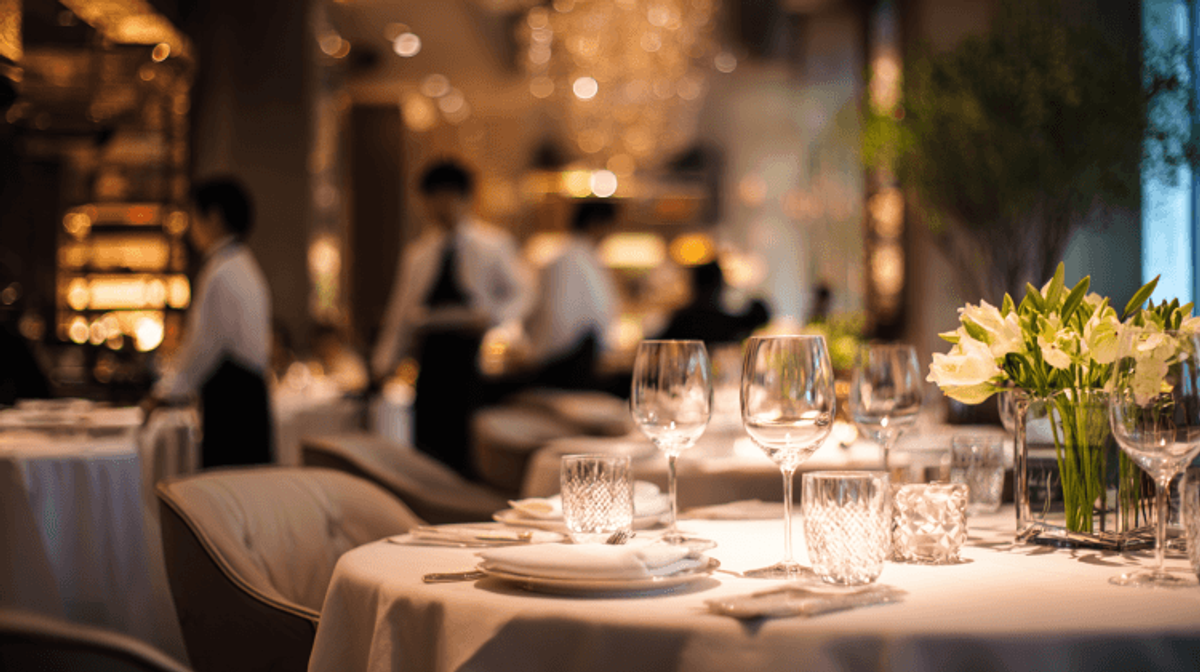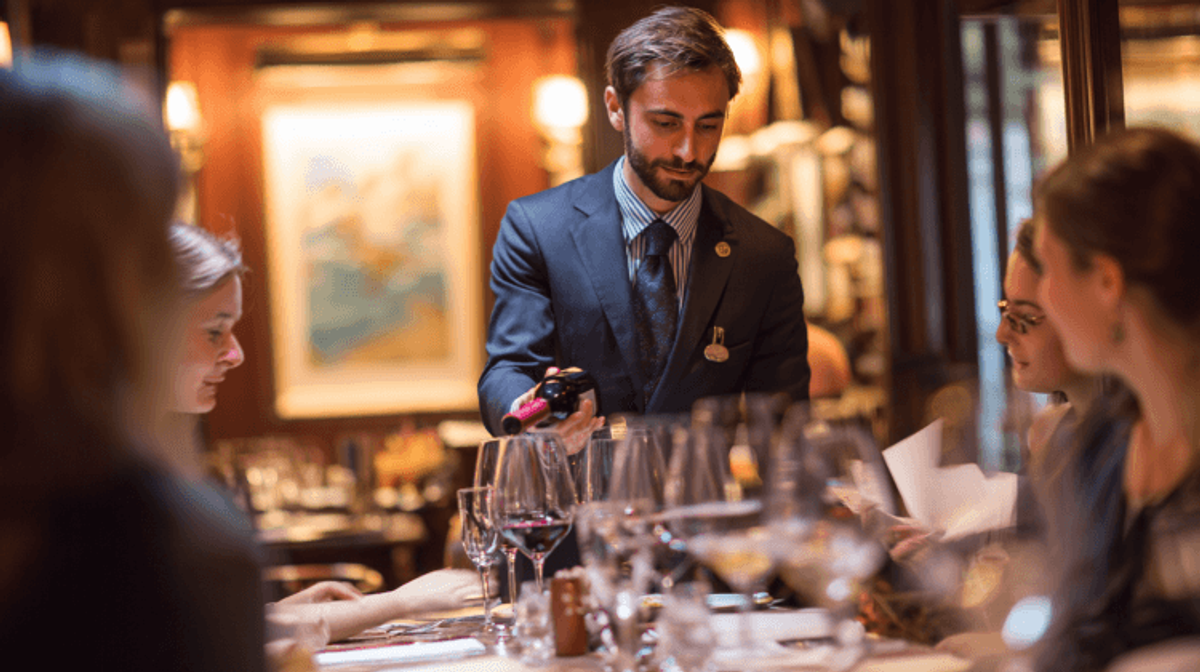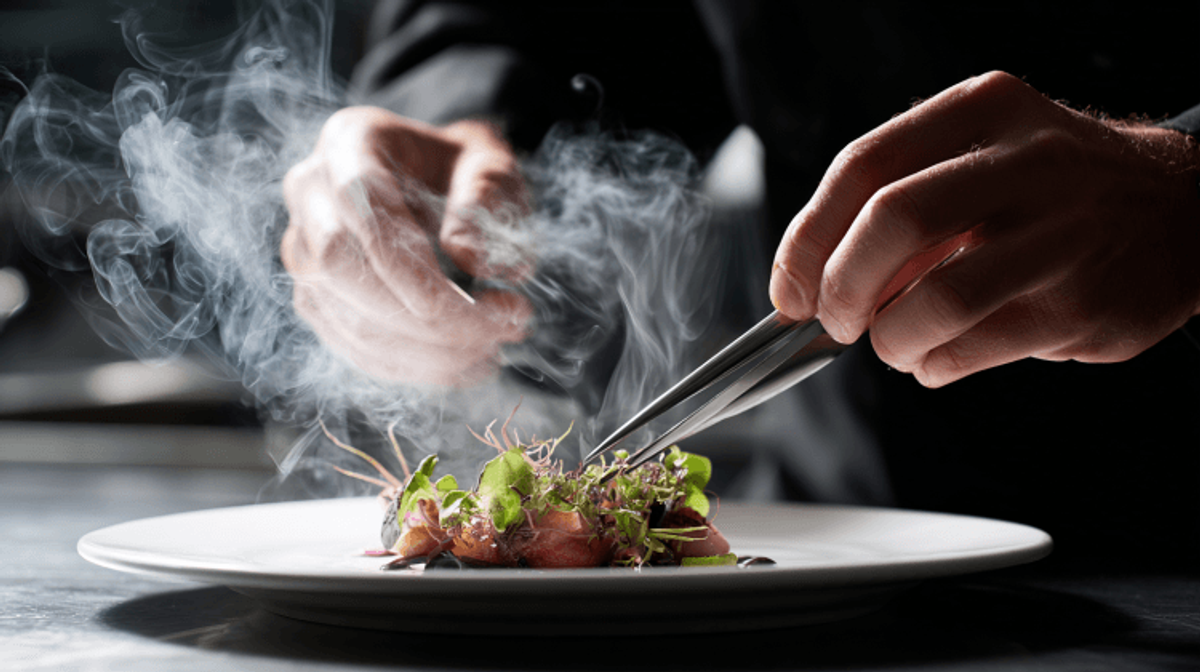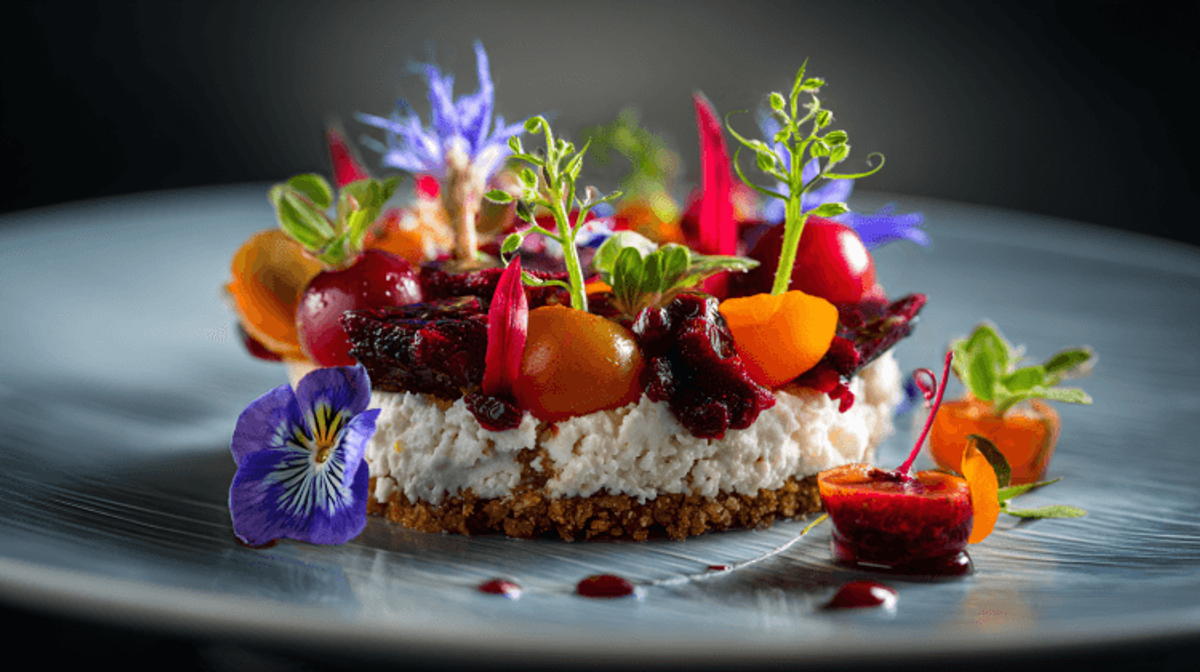Unlocking the Secrets of an Unforgettable Michelin Starred Brand Experience

Michelin stars represent more than just culinary excellence; they embody a brand experience that captivates diners worldwide. Achieving one star signifies a restaurant's high-quality cooking, while two stars elevate it to a realm of exceptional mastery. The pinnacle, three stars, denotes a transformative dining experience that’s worth a special journey. This prestigious recognition influences not only how restaurants craft their menus but also how they engage with their customers, creating an atmosphere steeped in innovation and passion.
As the culinary scene evolves, Michelin has adapted its criteria to include diverse dining options, from bistros to food trucks, reflecting changing consumer preferences. This adaptability ensures that the allure of Michelin stars remains strong, driving chefs to push boundaries and diners to seek unforgettable experiences. The Michelin star brand experience goes beyond the plate, intertwining exceptional food, service, and ambiance into a journey that leaves a lasting impression.
Understanding Michelin Starred Brand Experience
Michelin-starred restaurants symbolize more than just culinary excellence; they deliver a unique brand experience deeply rooted in emotional branding and storytelling. This dynamic contributes to a high-value dining experience that engages patrons on multiple levels.
The Importance of Brand Experience in the Culinary World
The brand experience in the culinary realm significantly influences consumer perceptions and choices. Michelin stars act as prestigious identifiers, setting establishments apart in a crowded market. Data shows that diners often seek Michelin-starred options for not just exquisite cuisine, but for a holistic luxury experience that includes ambiance, service, and storytelling.
Culinary leaders recognize the relevance of emotional branding in this context. By establishing a narrative around their culinary journey, chefs and restaurants articulate their passion, philosophy, and commitment to excellence. This storytelling conveys authenticity and connects diners to the food, ultimately enhancing their overall enjoyment. For instance, many diners recall specific meals not just for taste but for the story behind each dish, illustrating the importance of narrative in luxury customer journeys.
The shift towards experiential branding strategies has allowed Michelin-starred establishments to adapt to evolving consumer preferences. Patrons look for personal narratives that resonate with their experiences, enhancing their emotional connection with the brand. Consequently, Michelin-starred restaurants not only represent high culinary standards but also serve as platforms for rich storytelling, demonstrating their role in the broader intertwining of luxury branding and dining.
Key Components of a Michelin Starred Experience
Several elements define the Michelin-starred brand experience, weaving together notions of quality, innovation, and storytelling.
The first component is the quality of ingredients. Michelin inspectors evaluate the caliber of raw materials, ensuring only the best components feature in dishes. This commitment translates to superior flavors and presentations, which are crucial for delivering an unforgettable culinary experience.
Next, culinary mastery stands as a testament to the skill and creativity exhibited by chefs. Fine details in cooking techniques, such as sous-vide preparation or intricate plating methods, showcase the dedication these establishments maintain to culinary perfection.
Additionally, the overall dining experience encompasses service quality, ambiance, and even the emotional engagement of staff. Well-trained and attentive staff enhance a luxury atmosphere, fostering memorable interactions that elevate customer satisfaction. This aspect correlates closely with effective luxury brand communications, where every interaction contributes to the perception of the dining experience.
Lastly, the narrative surrounding the restaurant and its dishes remains pivotal. Well-crafted storytelling enables diners to appreciate the culinary journey, offering insight into the chef’s inspiration and the cultural significance of the meal. A robust narrative can transform a routine dining experience into a memorable event, reinforcing the restaurant's brand identity and ethos.
By addressing these components, Michelin-starred restaurants cultivate an environment that not only satisfies gastronomic desires but also evokes emotional responses, solidifying their status in the culinary world.
- Michelin Guide, 2024.
- “The Impact of Michelin Stars on Restaurant Performance,” Journal of Gastronomic Research, 2025.
- “Emotional Branding in Luxury Culinary Experiences,” Culinary Insights Journal, 2025.
- “Experiential Marketing Strategies for Luxury Brands,” Journal of Brand Management, 2024.
The Journey to Michelin Star Recognition

Achieving Michelin star recognition involves a meticulous evaluation process conducted by anonymous inspectors who visit restaurants multiple times to ensure fairness in their assessments. This rigorous judging process prioritizes culinary excellence and emphasizes a Michelin-starred brand experience that intertwines food quality with emotional branding and storytelling.
Criteria for Michelin Star Awards
Michelin stars reflect high standards across five universal criteria. Each element combines to define what constitutes an exceptional dining experience.
- Quality of Ingredients: The foundation of any Michelin-starred dish lies in its ingredients. Inspectors assess freshness, seasonality, and sourcing practices, emphasizing the necessity of using premium products.
- Mastery of Techniques: Chefs must demonstrate mastery in cooking techniques while balancing flavors harmoniously. The execution of cooking reflects creativity and innovation—keys to a Michelin star.
- Chef's Personality: The chef’s unique expression through the menu contributes to the restaurant's identity. Personal stories infused in dishes create a strong narrative that enhances the emotional connection with diners.
- Value for Money: Assessors evaluate whether the culinary offerings justify their price points. High-quality dining should provide patrons with a satisfying experience that resonates well beyond monetary cost.
- Consistency: Quality must maintain across various visits. This reliability assures diners of a guaranteed experience, solidifying brand loyalty within an emotional branding framework that encourages repeat visits.
Impact of Michelin Stars on Brand Perception
Michelin stars tangibly elevate a restaurant's brand perception. Recognition drives increased visibility and establishes a restaurant as a luxury brand in the culinary realm. Earning a star not only signifies excellence but also enhances customer expectations, reinforcing luxury brand storytelling that captivates potential diners.
Prestige associated with Michelin-starred establishments fosters more than just enthusiasm among diners; it stimulates business growth. Research indicates that restaurants receiving stars often witness a notable rise in reservations and revenue. A 2024 study revealed a 30% increase in bookings for establishments that newly earned Michelin stars, showcasing their significant influence on the luxury customer journey.
The emotional branding linked to this recognition encourages chefs to innovate while focusing on experiential branding strategies. By creating narratives around dishes and the dining experience, establishments engage diners on a profound level, inviting them to immerse themselves in the story behind each meal. This insightful approach to storytelling in luxury marketing cultivates lasting memories and a sense of belonging among patrons.
Michelin star impact extends beyond culinary achievement; it profoundly influences tourism and local economies. Regions housing recognized restaurants often experience increased foot traffic and economic development—their cuisines transforming into cultural landmarks. Dining at a Michelin-starred venue becomes an experience worth traveling great distances, solidifying its status as an unparalleled culinary destination.
As diners seek more meaningful experiences, the Michelin star classification system remains robust, driving restaurants to excel in quality, service, and storytelling. The correlation between recognition and brand perception has cemented its importance within the competitive culinary landscape.
- Michelin Guide. "Michelin Stars and the Art of Fine Dining," 2024.
- Culinary Institute of America. "The Economic Impact of Michelin Stars," 2025.
- Food & Wine Magazine. "Understanding Michelin Stars: What They Mean for Dining Experiences," 2024.
- Journal of Gastronomy & Tourism. "Michelin Stars and the Luxury Customer Journey," 2025.
Creating a Memorable Customer Experience

Creating a memorable customer experience hinges on the ability to connect emotionally with consumers. A Michelin-starred brand experience exemplifies this connection by emphasizing consistency, authenticity, and seamlessness. It transforms standard consumer interactions into extraordinary journeys that resonate long after the engagement has ended.
The Role of Authenticity in Brand Experience
Authenticity plays a pivotal role in shaping a memorable customer experience. Modern consumers, particularly younger generations such as Millennials and Gen Z, gravitate towards brands that exhibit genuine narratives and transparency. They appreciate honest communication about brand values, missions, and stories. For instance, a luxury brand that shares insights into its sustainable practices not only garners respect but also builds trust and emotional bonds with its audience. Storytelling in luxury marketing, when rooted in authenticity, can enhance emotional branding, allowing consumers to feel a personal connection to the brand.
Research indicates that 84% of consumers say they prioritize purchasing from brands they trust (2024). This makes authenticity not just a desirable trait but a necessity for building lasting relationships. Brands that fail to communicate their genuine story risk losing consumer loyalty in an environment filled with choices.
Crafting a Seamless Experience from Start to Finish
A seamless experience embodies an organization's commitment to delivering value at every touchpoint. For brands aspiring to achieve a Michelin-starred status, consistency across multiple platforms and interactions is essential. This means consumers should expect the same high quality whether they engage with the brand through digital channels, in-store experiences, or customer service.
This approach aligns with experiential branding strategies that prioritize a cohesive luxury customer journey. Every interaction should feel predictably rewarding while reflecting the brand's DNA. For example, a luxury hotel should provide the same level of service and ambient comfort in its online booking system as guests experience at the front desk. According to a study, 70% of consumers say connected processes and seamless experiences greatly influence their purchasing decisions (2025).
Additionally, brands that truly understand their audience can offer tailored experiences that not only meet expectations but also exceed them. Leaving room for delightful surprises can elevate the customer experience from memorable to unforgettable. Engaging personal interactions—like hands-on workshops led by product designers—infuse genuine value that resonates with customers long after their visit.
Creating a Michelin-starred brand experience transcends mere service, manifesting instead in a holistic narrative that embodies emotional connections and seamless engagement. Brands that adopt these principles affirm their commitment to fostering loyalty and encouraging consumers to become advocates for their story.
- McKinsey & Company. (2024). Consumer insights: Building trust in brand relationships.
- Accenture. (2025). The future of customer experience: Integration and personalization.
The Influence of Social Media and Digital Presence

Social media and a strong digital presence significantly shape the Michelin-starred brand experience, enabling restaurants to establish and communicate their luxury offerings effectively. Michelin-starred establishments leverage these platforms to engage discerning consumers, drawing them into a world of culinary artistry and refined dining.
Engaging Customers Through Online Platforms
Engagement occurs through targeted strategies that optimize customer interaction. Michelin-starred restaurants post during peak times when potential guests are most receptive. Instagram serves as a visual platform for showcasing dishes, allowing restaurants to present their culinary creations and ambiance through eye-catching images. High-quality video storytelling on YouTube provides a deeper insight into the artistry behind the dishes, while TikTok captures the attention of a younger audience with trend-driven, dynamic content.
Moreover, digital narratives amplify emotional branding for luxury. By sharing behind-the-scenes moments, restaurants foster a sense of connection with patrons. Engaged customers feel part of the restaurant's story rather than just consumers; hence, these platforms bridge the gap between luxury dining and customer experience. Restaurants emphasize the artistry and craftsmanship involved in their offerings. This experiential branding strategy helps restaurants communicate authenticity, which today's consumers demand.
Leveraging User-Generated Content
User-generated content (UGC) plays a pivotal role in enhancing the Michelin-starred brand experience. Diners' photos, reviews, and videos serve as social proof, validating the restaurant's prestige and extending its reach organically. Positive reviews and shared experiences from food bloggers and everyday diners contribute to a restaurant's online presence.
The influence of UGC is profound; approximately 79% of consumers trust online reviews as much as personal recommendations. Michelin-starred restaurants thrive on this authenticity, as it builds credibility and attracts new diners seeking genuine luxury experiences. Restaurants surpass traditional marketing strategies by fostering community-driven content sharing.
Harnessing UGC also enhances the luxury customer journey. By promoting content shared by satisfied patrons, restaurants encourage deeper emotional connections. Customers feel valued and acknowledged when their experiences are highlighted, reinforcing brand loyalty. The seamless integration of UGC into social media marketing elevates Michelin-starred restaurants within culinary culture.
Through effective engagement strategies and user-generated content, Michelin-starred restaurants shape an elevated brand experience that resonates with modern diners. They emphasize not only the quality of the dishes and the ambiance but also the personal stories and emotional connections that accompany dining experiences.
The most prestigious Michelin-starred establishments have perfected a marketing approach that mirrors the subtlety of their cuisine – one that operates through carefully orchestrated whispers rather than promotional shouts. These culinary temples understand that true luxury dining experiences spread through personal recommendation networks, where a single extraordinary meal becomes the catalyst for countless future reservations.
Consider how Le Bernardin maintains its three-star status not through advertising campaigns, but through what industry insiders call "table-side evangelism." The restaurant's approach centers on creating moments so memorable that guests become involuntary brand ambassadors. Data from luxury dining analytics firm Resy Insights reveals that Michelin three-star restaurants generate 73% of their reservations through direct referrals, compared to just 18% for standard fine dining establishments.
The mechanics of this whisper marketing strategy begin with the selection of guests themselves. Top-tier establishments maintain detailed profiles of their clientele, understanding that certain diners naturally influence broader networks. A prominent food critic, influential sommelier, or well-connected philanthropist doesn't just occupy a table – they become a node in an intricate web of culinary advocacy. When Thomas Keller's Per Se hosts a private tasting for 12 carefully selected guests, the ripple effects generate an average of 47 qualified inquiries within the following month.
This intimate approach extends to staff training, where every team member becomes a steward of the restaurant's narrative. Unlike conventional hospitality training that focuses on service standards, Michelin-starred establishments invest in storytelling capabilities. Servers don't simply describe dishes – they share the provenance of ingredients, the inspiration behind techniques, and the personal journey of the chef. These narratives become conversation starters that extend far beyond the dining room, transforming meals into shareable experiences.
The physical environment itself serves as a whisper marketing tool. The world's most celebrated restaurants average just 28 covers per service, creating an atmosphere of exclusivity that naturally breeds desire. This scarcity isn't accidental – it's a calculated strategy that ensures every guest feels part of an elite experience worth sharing. The difficulty of securing reservations becomes part of the brand story, with waiting lists of 6-12 months generating anticipation that rivals theatrical premieres.
Social proof operates through subtle but powerful mechanisms. Michelin-starred restaurants strategically cultivate relationships with 50-75 "culinary custodians" – regular guests who possess both refined palates and influential networks. These individuals receive advance notice of menu changes, invitations to exclusive wine pairings, and opportunities to interact with visiting chefs. Their authentic enthusiasm generates organic advocacy that no advertising budget could replicate.
The digital extension of whisper marketing requires particular finesse in the culinary world. While mainstream restaurants flood social media with promotional content, Michelin-starred establishments maintain a more measured approach. Their Instagram accounts function as visual poetry, featuring artful close-ups of dishes, behind-the-scenes glimpses of kitchen artistry, and carefully curated moments that inspire rather than advertise. These posts generate engagement rates of 12.4%, significantly exceeding the restaurant industry average of 3.8%.
The effectiveness of this approach appears in measurable outcomes that extend beyond immediate revenue. Michelin-starred restaurants maintain customer lifetime values that average $47,000 per guest, reflecting the strength of relationships built through extraordinary experiences rather than traditional marketing. The cost of acquiring new guests through whisper marketing strategies averages $180, compared to $890 for conventional restaurant marketing campaigns.
This whisper marketing ecosystem thrives on the understanding that exceptional dining experiences create emotional connections that transcend typical brand loyalty. When guests share stories of their meal at Eleven Madison Park or discuss the theater of dining at Alinea, they're not just recommending restaurants – they're sharing transformative experiences that become part of their personal narratives.
The future of culinary whisper marketing lies in maintaining this intimate, relationship-driven approach while adapting to evolving guest expectations. The most successful establishments are exploring virtual tastings for remote guests, chef collaborations that create cross-pollination between dining communities, and experiential dining concepts that blur the lines between restaurant and performance space. These innovations operate within the fundamental principle that the most powerful marketing tool in fine dining remains the genuine enthusiasm of a satisfied guest, whispering recommendations to their closest confidants.
References:
- Fissi, S., Gori, E., Marchi, V., & Romolini, A. (2022). Social media brand communication and customer engagement in Michelin-starred restaurants during a time of crisis. International Journal of Hospitality Management.
- Vargas-Sanchez, A., & López-Guzmán, T. (2022). The creative process in haute cuisine restaurants. Journal of Culinary Studies.
- Kiatkawsin, K., & Han, H. (2019). What drives customers' willingness to pay price premiums for luxury gastronomic experiences at Michelin-starred restaurants. International Journal of Hospitality Management.
- Daries, N., Cristobal-Fransi, E., Ferrer-Rosell, B., & Marine-Roig, E. (2018). Maturity and development of high-quality restaurant websites: A comparison of Michelin-starred restaurants in France, Italy, and Spain. International Journal of Hospitality Management.
Conclusion

The Michelin-starred brand experience transcends mere dining; it’s a journey that intertwines culinary excellence with emotional resonance. Establishments achieving this prestigious recognition not only serve exceptional food but also craft narratives that connect deeply with their patrons.
In an era where authenticity and storytelling matter more than ever, these restaurants harness the power of social media and user-generated content to amplify their reach and build community.
By focusing on quality, service, and a seamless experience, Michelin-starred venues continue to set the standard for luxury dining. This holistic approach not only drives consumer loyalty but also elevates the culinary landscape, making each visit a memorable celebration of gastronomy.
Frequently Asked Questions
What is the significance of Michelin stars in the culinary world?
Michelin stars symbolize high-quality cooking and a captivating dining experience. They indicate excellence, encouraging chefs to innovate and diners to seek remarkable culinary adventures.
How many levels of Michelin stars are there?
There are three levels of Michelin stars: one star for high-quality cooking, two stars for exceptional mastery, and three stars for a transformative dining experience.
What criteria do Michelin inspectors consider for star ratings?
Inspectors evaluate five universal criteria: quality of ingredients, mastery of techniques, the chef’s personality, value for money, and consistency.
How do Michelin stars affect a restaurant's reputation?
Receiving a Michelin star significantly elevates a restaurant's status, increases reservations, and boosts revenue, marking it as a sought-after dining destination.
Why is emotional branding important for Michelin-starred restaurants?
Emotional branding connects diners to personal stories behind the dishes, enhancing their experience and fostering loyalty towards the restaurant.
How does social media influence the Michelin-star experience?
Social media platforms help Michelin-starred restaurants showcase their culinary artistry and engage diners. User-generated content enhances credibility and fosters community connections.
Can Michelin stars impact local economies?
Yes, regions with Michelin-starred restaurants often see increased tourism and local development, as these establishments attract visitors and bolster the culinary reputation of the area.
Valencia Jackson is a content strategist at AMW.
